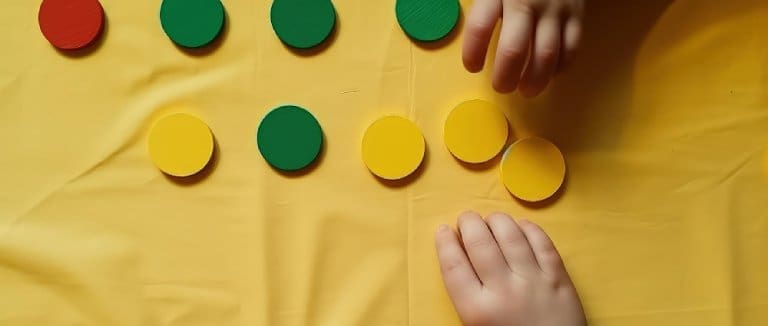What is Sensory Integration Therapy?
Sensory Integration Therapy (SIT), also known as sensory integration occupational therapy, is a specialized approach designed to help individuals who experience difficulties with sensory processing. This therapy is based on the understanding that our brains receive information from our senses touch, taste, smell, sight, hearing, movement, and balance and interpret it so we can respond appropriately. For some people, this process may be inefficient or disrupted, leading to sensory integration challenges. Through Sensory Integration Therapy, individuals can improve their ability to process sensory information, enabling them to navigate their environment and participate in daily activities more effectively and confidently.

Sensory Integration Therapy for Adults
Sensory Integration Therapy (SIT) presents a pivotal approach in addressing sensory processing challenges among adults, offering a tailored intervention to enhance daily functioning. For adult populations, SIT holds multifaceted benefits, aiding in managing stress, improving focus, and refining emotional regulation. Tailored techniques for adults might include mindfulness exercises, deep pressure stimulation, or sensory-based relaxation techniques. These interventions assist in fostering a more comfortable and adaptable response to sensory input, facilitating enhanced engagement in work, relationships, and daily activities for individuals navigating sensory processing difficulties in adulthood.
Experience the warmth of compassionate care combined with cutting-edge therapy at Liv Hospital in Türkiye.
Occupational Therapy for Sensory Integration
Occupational therapists play a vital role in sensory integration by thoroughly addressing sensory challenges through personalized interventions. They skillfully incorporate sensory techniques into therapy sessions, using activities that develop essential sensory processing skills for daily life. By working collaboratively within sensory-integrative therapy, occupational therapy provides a holistic approach. OTs assess individual needs and implement sensory strategies to improve fine motor skills, attention, and emotional regulation. This teamwork maximizes positive outcomes, encouraging greater independence and functional abilities, and highlights a client-centered, integrated approach for optimal therapeutic results..

Find comfort and expert care with professional support and world-class therapy at Liv Hospital in Istanbul. Discover how sensory integration expertise can help you enjoy a richer, more fulfilling life.
A Deep Dive into Sensory Integration
Occupational therapy (OT) has a close connection with sensory processing, working together to improve individuals' functional abilities. OTs carefully examine how sensory information affects daily activities and customize interventions to meet each person's needs. By understanding how individuals perceive and respond to sensory input, OTs develop strategies to enhance sensory modulation, attention, and motor skills”essential for everyday tasks. Sensory processing forms the foundation of OT interventions, which often incorporate sensory-based techniques to boost engagement and participation across various life domains. By addressing sensory needs through activities such as tactile experiences or vestibular stimulation, OTs help individuals better navigate their sensory environment, fostering greater independence and quality of life. This strong link highlights the crucial role of sensory processing in supporting meaningful daily engagement through occupational therapy.
Enhancing Daily Functioning: OT Sensory Integration Therapy
The collaboration between Occupational Therapy (OT) and Sensory Integration Therapy (SIT) extends beyond specific conditions, encompassing diverse occupational therapy contexts. SIT finds application across age groups and conditions, aiding individuals in improving daily functioning by addressing sensory processing difficulties. From children with developmental delays to adults managing stress-related challenges or neurological conditions, integrating sensory techniques within OT sessions is invaluable. Therapists adeptly modify sensory interventions, utilizing them in rehabilitation, mental health settings, and senior care to enhance sensory modulation and functional abilities. This collaborative approach ensures a tailored response to diverse sensory needs, fostering improved engagement, independence, and quality of life across a broad spectrum of individuals seeking support through occupational therapy interventions.
Uncover tailored solutions for sensory challenges at Liv Hospital in Türkiye. Let us guide you towards a harmonious sensory journey.
Sensory Integration Disorder: Occupational Therapy Approaches
It is crucial to understand occupational therapy for sensory integration disorder as it profoundly impacts daily life. Individuals with SID struggle to process sensory input, affecting behavior and function. Occupational therapy (OT) tackles these challenges by designing personalized interventions. OTs employ sensory-rich activities like brushing techniques, therapeutic swinging, or tactile experiences to regulate sensory responses. Customized sensory diets and environmental modifications are tailored to each individual's needs, fostering better sensory processing and behavioral regulation. Occupational therapy and sensory integration prioritize empowering individuals, providing strategies to navigate sensory challenges, promoting improved participation in daily activities, and enhancing overall quality of life.
Join us at Liv Hospital in Istanbul, where personalized therapy meets international standards. Your journey to sensory well-being starts here.
Sensory Integration Therapy at Home

Implementing Sensory Integration Therapy (SIT) at home involves careful planning and activities tailored to each person's sensory needs. A sensory-friendly home environment can be created by organizing spaces to reduce sensory overload and adding tools such as weighted blankets or fidget toys. Families and caregivers play a key role by setting predictable routines, including sensory activities in daily life, and offering a safe space for sensory regulation. Working with therapists ensures the creation of personalized activities that are consistent with therapy sessions. Ultimately, family guidance focuses on understanding sensory requirements, applying supportive strategies, fostering an environment that benefits sensory processing, and nurturing overall well-being at home.
Sensory Integration Therapy for Autism Spectrum Disorder (ASD)
Understanding the sensory challenges associated with Autism Spectrum Disorder (ASD) is essential, as individuals with ASD often have intensified or reduced responses to sensory input. Sensory integration therapy for autism addresses these challenges through structured interventions tailored to each person's unique sensory profile. Both research and success stories highlight SIT's effectiveness in enhancing sensory modulation, increasing focus, and easing sensory-related distress. Therapists personalize activities”such as sensory diets or specialized play”to match individual sensory preferences, promoting self-regulation and facilitating meaningful participation, while recognizing the broad range of sensory needs within the spectrum.
Liv Hospital - Sanctuary of Holistic Care
Navigating the complexities of sensory integration challenges often requires professional guidance and reliable resources. By incorporating sensory integration principles into daily routines, individuals can better manage their sensory needs, leading to improved engagement and daily functioning. Liv Hospital is recognized for its excellence in healthcare, offering comprehensive, world-class services that meet international standards. With seven state-of-the-art hospitals, Liv Hospital is dedicated to "Leading International Vision." If you're searching for sensory integration therapy or holistic healthcare, consider Liv Hospital for personalized treatment and a commitment to well-being”all at accessible prices in Türkiye.
* Liv Hospital Editorial Board has contributed to the publication of this content .
* Contents of this page is for informational purposes only. Please consult your doctor for diagnosis and treatment. The content of this page does not include information on medicinal health care at Liv Hospital .
For more information about our academic and training initiatives, visit Liv Hospital Academy.
Frequently Asked Questions
What is Sensory Integration Therapy?
Sensory Integration Therapy is a specialized approach that helps individuals process sensory information more effectively, improving focus, coordination, and daily functioning.
Who can benefit from Sensory Integration Therapy?
Both children and adults who experience sensory processing difficulties, such as sensitivity to touch, sound, or movement, can benefit from this therapy
Is Sensory Integration Therapy effective for adults?
Yes, adults can benefit from sensory-based therapy techniques such as mindfulness, deep pressure stimulation, and movement-based exercises to manage stress and improve focus.
How is Sensory Integration Therapy used for Autism Spectrum Disorder (ASD)?
For individuals with ASD, Sensory Integration Therapy helps regulate responses to sensory input, reduces distress, and enhances participation in daily activities.
Can Sensory Integration Therapy be practiced at home?
Yes, with professional guidance, families can integrate sensory activities and create a supportive home environment to reinforce therapy outcomes.
What are common techniques used in Sensory Integration Therapy?
Therapy sessions may include tactile play, swinging, balance exercises, brushing programs, or activities that stimulate specific sensory systems in a controlled way.
What is sensory integration disorder?
Sensory integration disorder refers to difficulties in processing sensory input, which can affect behavior, learning, and emotional responses in everyday situations.
Why choose Liv Hospital for Sensory Integration Therapy?
Liv Hospital in Türkiye offers evidence-based occupational and sensory integration therapy programs delivered by expert therapists in a multidisciplinary environment.

